After a long job off the coast of Australia in January and February 2014, we ended up with one free day in Melbourne before our return flight to Europe. A single day to explore Australia posed a bit of a challenge, so we surfed the web to find out what options were available for seeing wildlife around Melbourne. We eventually came across the website of Echidna Walkabout in Melbourne (www.echidnawalkabout.com.au), who offer tours of different durations in the surroundings of Melbourne and further afield. We went for the day trip called "Koalas and Kangaroos in the Wild”.
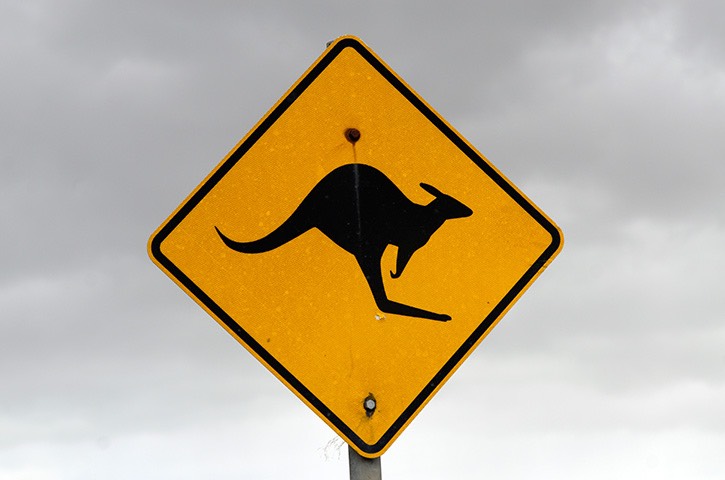
Everything was easily arranged online and on the morning of the 20th of February 2014 we took a taxi from our airport hotel into the centre of Melbourne, where our tour guide Paul picked us up in the lobby of a conveniently located hotel.
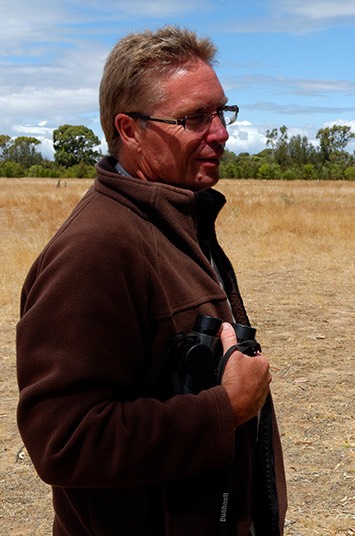
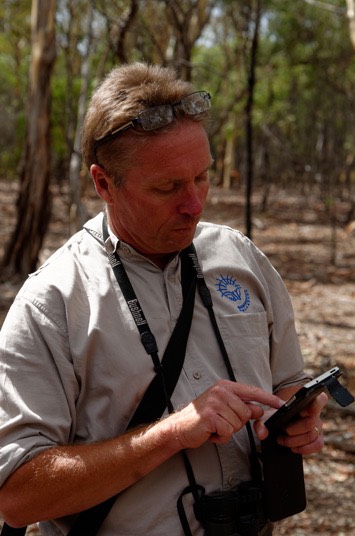
As we were the first of the group to be picked up, we could choose where to sit in the minivan and quickly grabbed the front row seats. Echidna Walkabout keeps their groups small, with a maximum of eight people, and on this day we would be seven. A couple from Canada and a British guy, who turned out to be an actor (mainly for TV ads) joined us a little while later. We then drove west out of the city for about 45 minutes and collected a Swedish couple, who were touring southern Australia in a camper van.
At the meeting point with the Swedish couple - the Serendip Sanctuary which we would explore later in the afternoon - we bumped into our first koala (Phascolarctos cinereus) of the day! It was a well-known male called Yeaves, who apparently often hangs out in this area. When we first spotted him, Yeaves wasn’t particularly active - in fact, just the opposite! As the eucalyptus diet of koalas is not very nutritious, they spend up to 20 hours a day digesting and sleeping and this guy was tightly wedged into the fork of a tree, enjoying an extended early morning snooze.
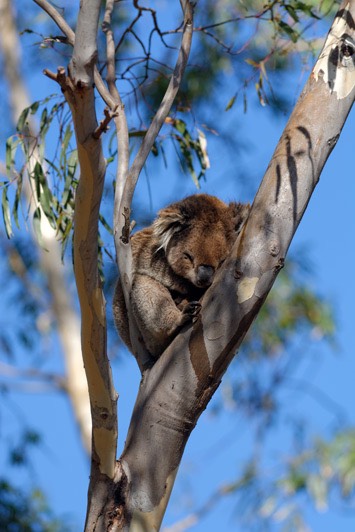
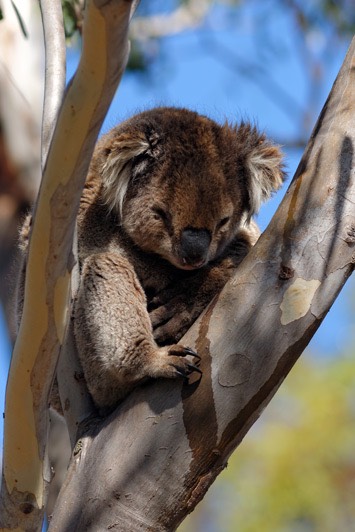
Yeaves briefly perked up, letting us fully appreciate his fluffy ears and massive claws, which clearly come in handy when you have to hang on to a tree while sleeping! Then, after a brief pose for us, he went straight back to sleep, snuggling up to the trunk of the tree.
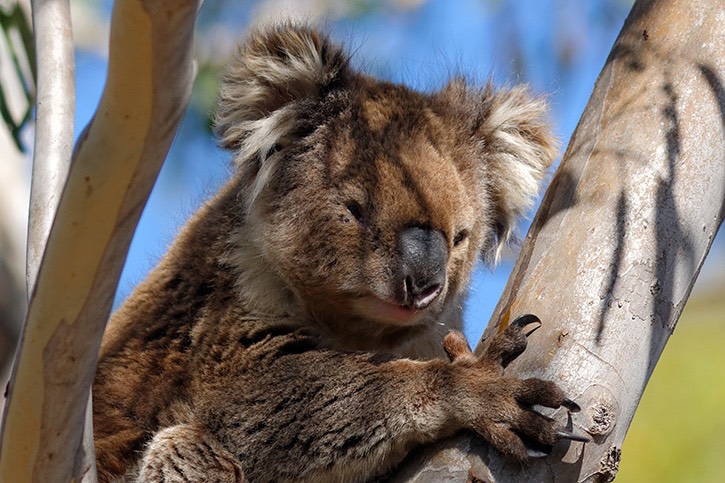
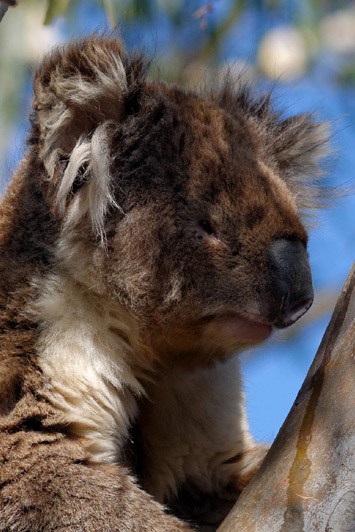
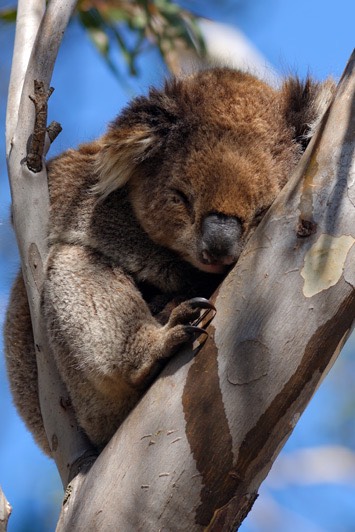
Everybody was happy having spotted the first koala right at the beginning of the tour. On we went to the You Yangs Regional Park, a stronghold for the regional koala population. Once there, we were able to get out of the van and go for a walk in search of koalas and other animals.
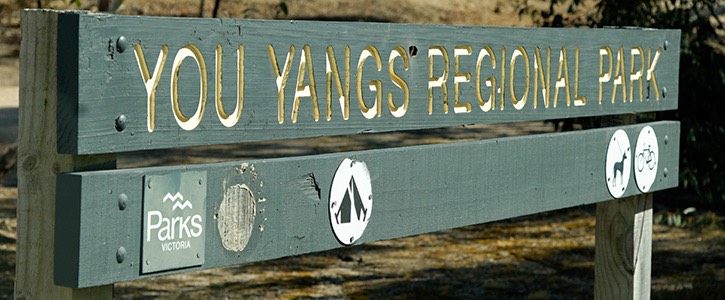
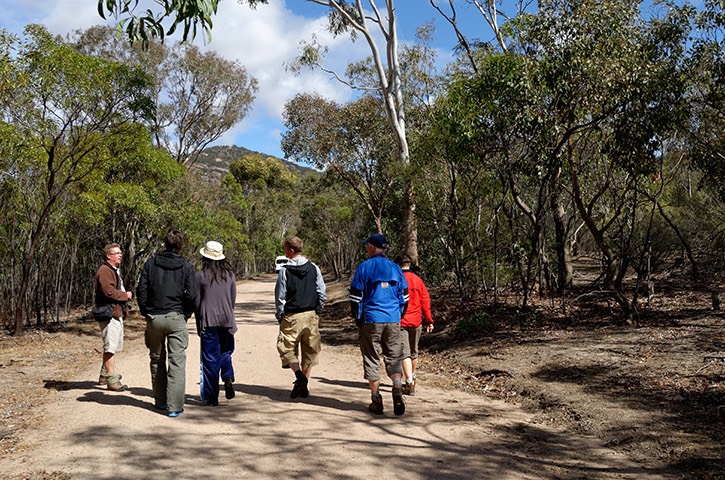
First thing in the morning, a koala researcher named Donna had done a tour through the park and marked all trees in which she had seen a koala with a bright pink ribbon. At first it seemed like cheating that we weren’t genuinely finding our own koalas, but when we got to the first pink ribbon we realised why it was important to have an experienced person looking for these elusive critters. Despite being used to spotting marine mammals, which are not always easy to see, we certainly found it rather difficult to find a little, brown mammal high up in a tree. Spot the koala in the photo below!
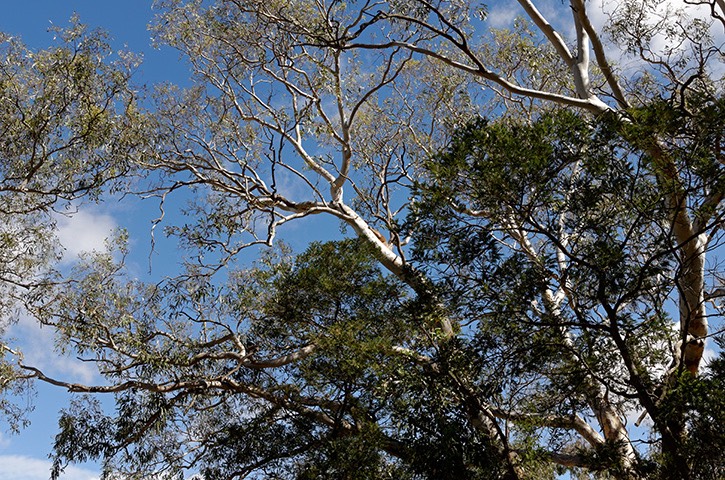
After he was first spotted, he was obvious, although this particular koala was rather camera shy and tried to hide himself behind a big branch.
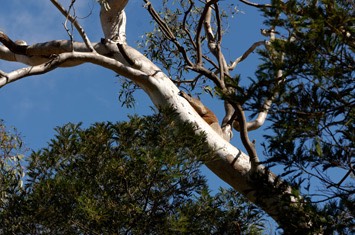
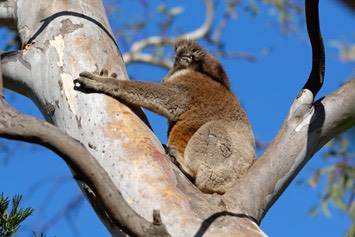
In contrast with the koala’s behaviour, a couple of galahs (Cacatua roseicapilla) happily posed for us on a gnarled old tree branch. These small parrots are stunning with their bright pink breasts.
On we walked, enjoying the scenery of rocky outcrops, eucalyptus and other trees.
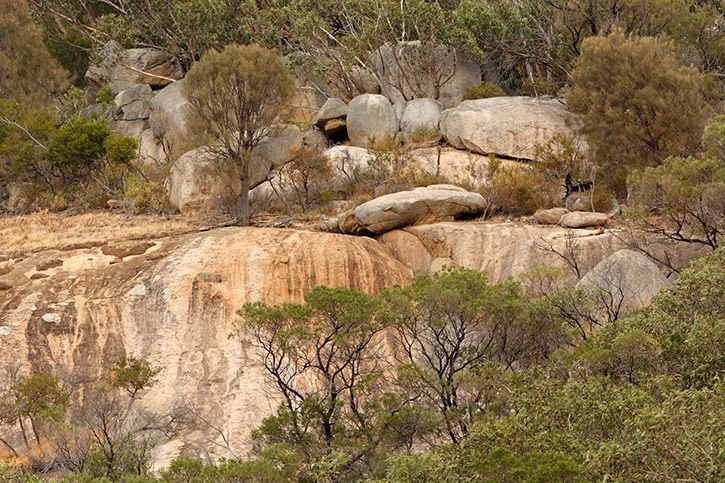
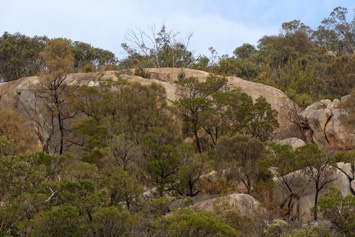
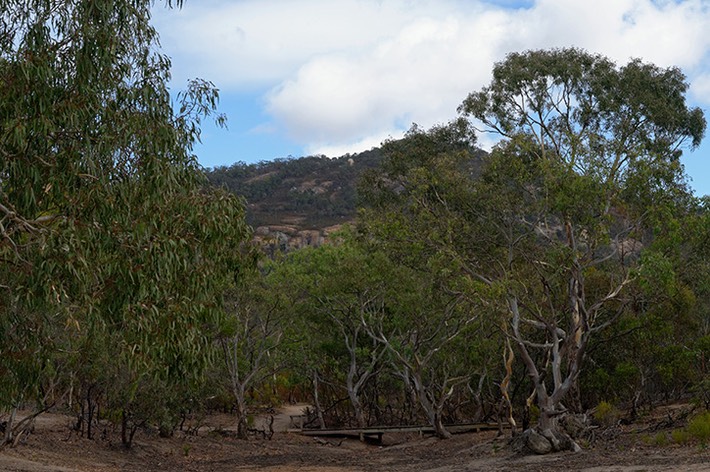
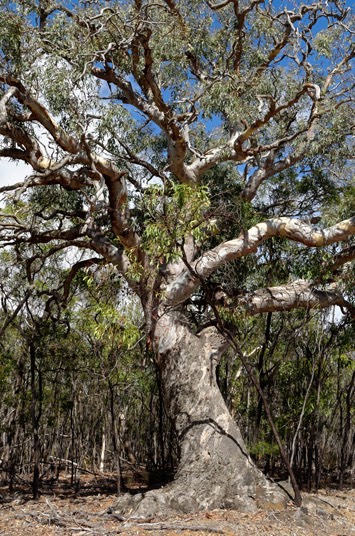
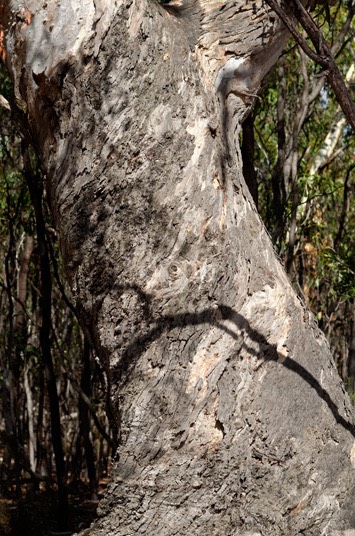
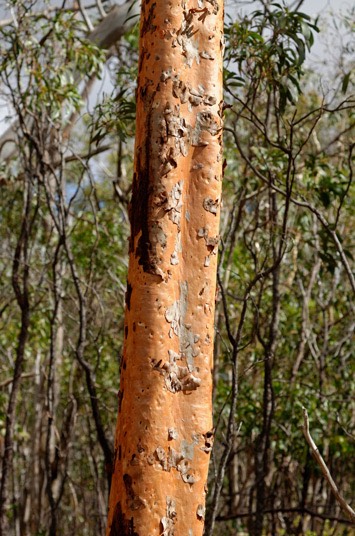
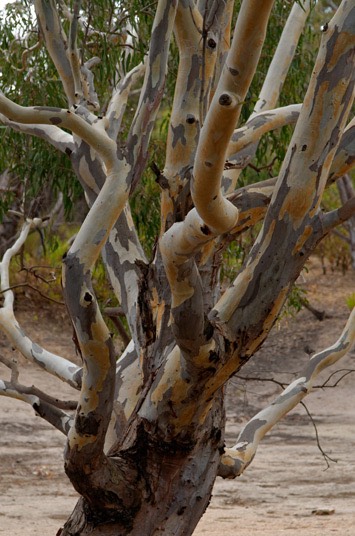
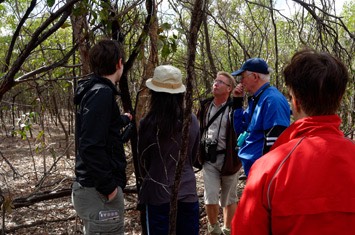
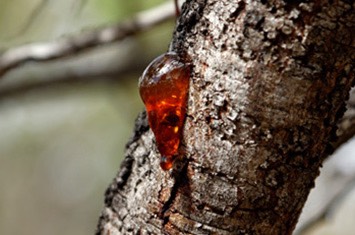
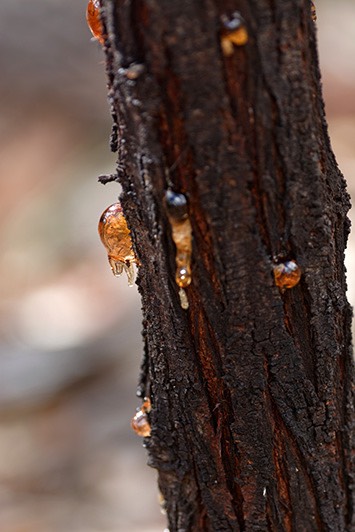
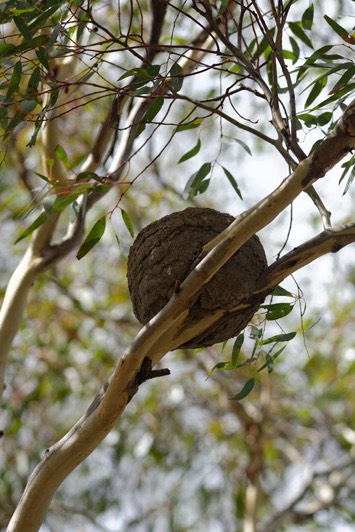
After a short drive in the van, we stopped at the next pink ribbon tied to a bush. This koala was much easier to spot, as she was sitting in a lower branch. Paul told us that this female was called Truganina, named after an Aboriginal lady. The main way to tell different koalas apart is by looking at the patterns on their noses, which are as individual as a human fingerprint. Paul had developed an impressive technique of taking photos with a mobile phone through his binoculars, allowing those people without cameras to get nice close-up shots of the koala. Truganina turned out to be the koala star of the day, as she posed nicely for us, peeping from behind a branch lit by sunlight.
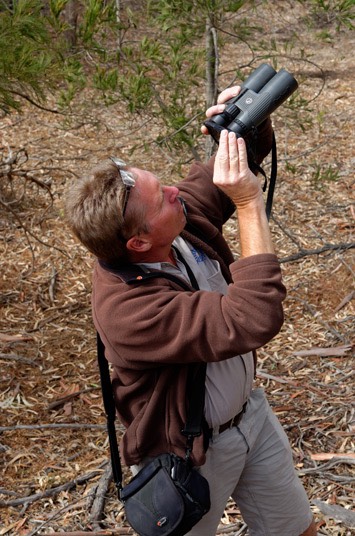
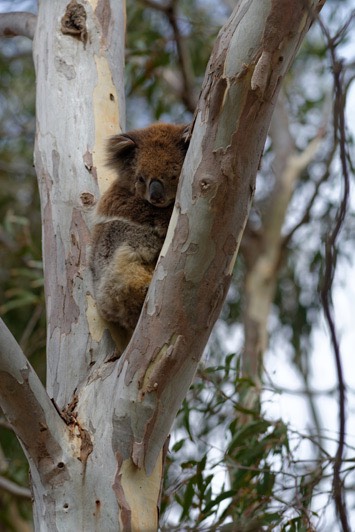
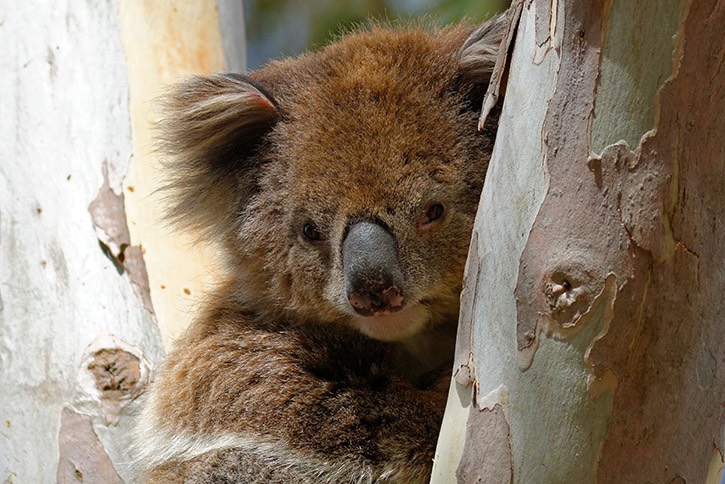
However, being so cute is hard work, and it didn’t take too long before Truganina went back to sleep, too.
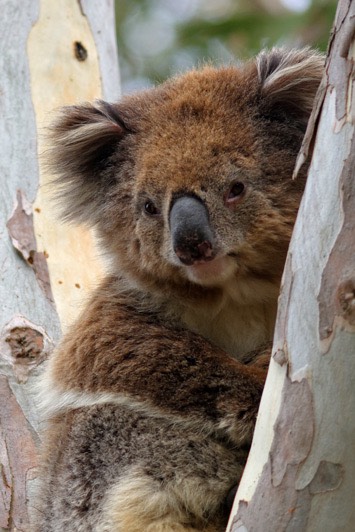
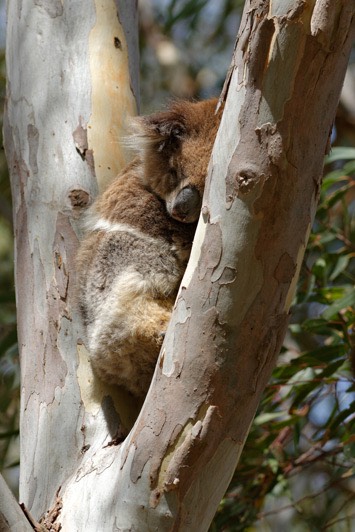
Although there are hundreds of species of eucalyptus trees, koalas only eat the leaves of a few of them. Under the tree Paul found some of Truganina’s droppings and he explained to us that koalas' teeth wear out over time, so that, eventually, they can’t chew up the leaves properly. One can, therefore, tell the age of a koala by looking at their poo. Truganina was already an elderly lady, leaving her poo full of coarse bits of plant material.
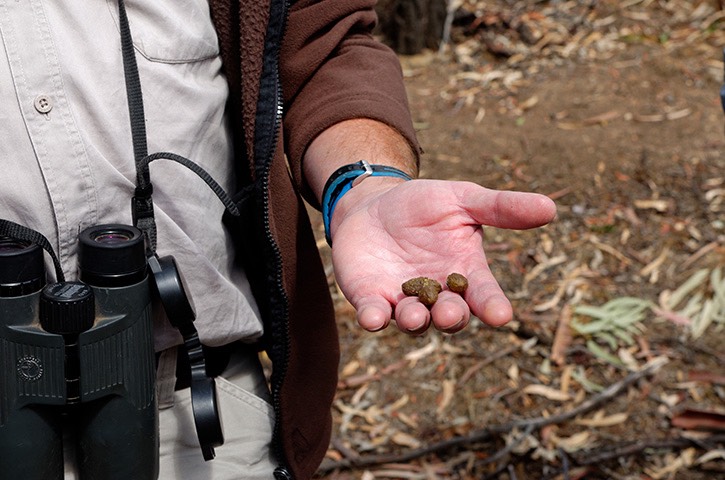
Koalas, together with the kangaroos and wallabies amongst others, belong to the marsupials, a group of mammals in which the young are born tiny, undeveloped, naked and blind and then have to find their way to their mothers pouch, where they continue growing.
On we went with the van until there was a shout from the Swedish man on the back seat, saying he had just seen something like a hedgehog. Paul quickly backed up, and lo and behold a short-beaked echidna (Tachyglossus aculeatus) sat just next to the track! According to Paul they are not commonly seen and it is even more rare for one to stay put when a vehicle pulls up next to it. This little chap didn’t seem to be too worried by our presence and scuttled around in the undergrowth for quite some time. It gave us enough time to fully appreciate its beak, spines and fluffy ears, not forgetting the impressively long eyelashes! Together with the platypus, echidnas are the only egg-laying mammals (monotremes) in the world.
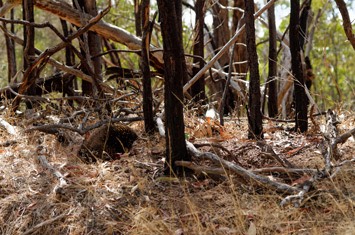
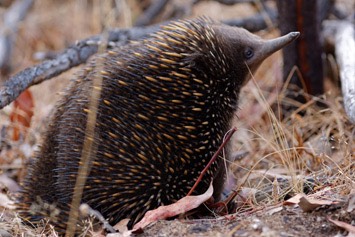
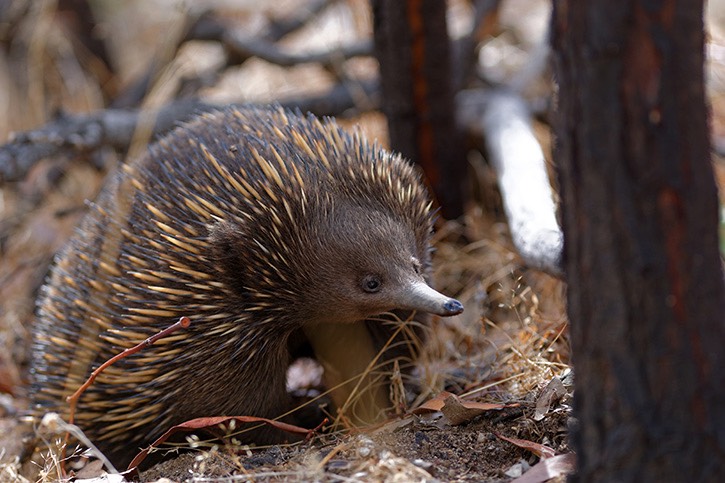
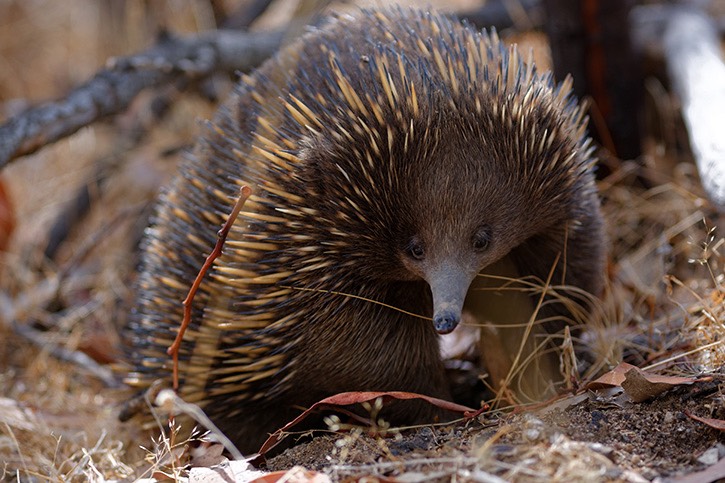
Now we also had a chance to compare the logo of our tour operator with the real thing, and we have to say that Echidna Walkabout did a good job with their stylised icon!
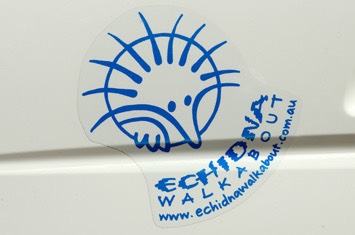
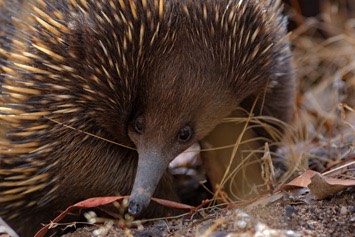
We were all very pleased to have seen this rather unusual species on our tour but the next two koalas were already waiting in the wings. One was so high up in the tree that we didn’t get any decent pictures of it and the other one didn’t appear to be too thrilled by the interruption to its quiet time. It has to be said though, that even a grumpy koala is a cute koala!
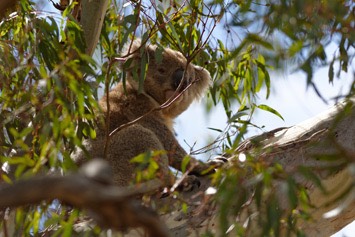
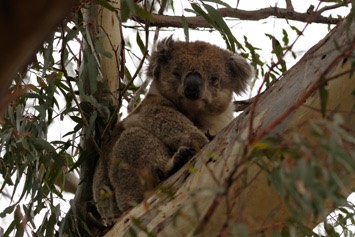
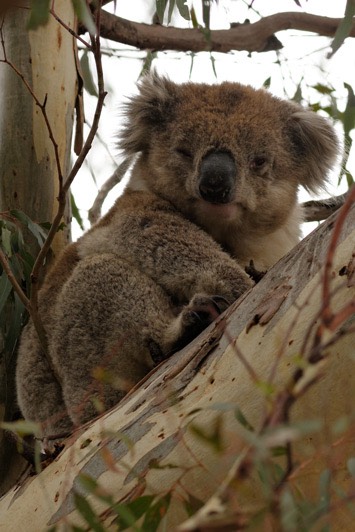
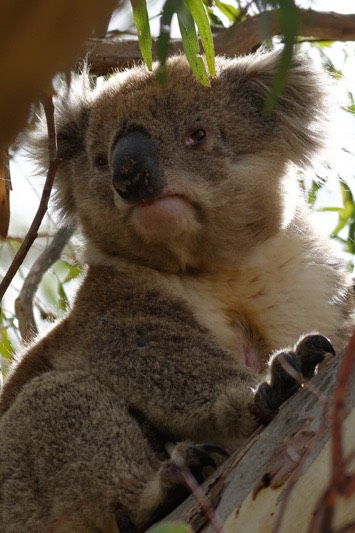
On our walk from the koala tree back to the van, Paul spotted a black wallaby (Wallabia bicolour) hiding in the dense undergrowth. Despite its name, it wasn’t all black but had some lovely rufous fur on its head and chest. Once we spotted it, it stayed perfectly still, only occasionally moving its head or big ears very slightly.
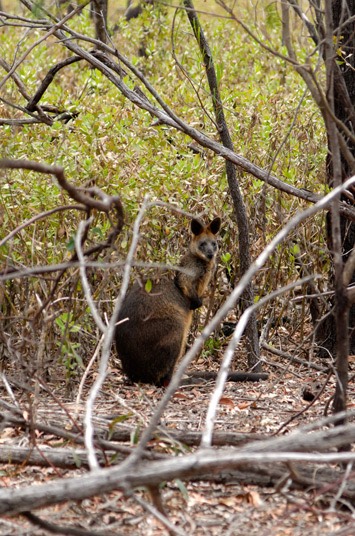
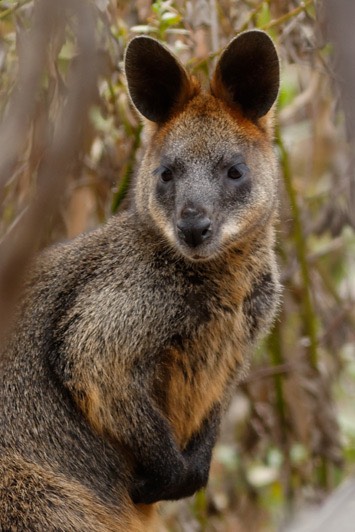
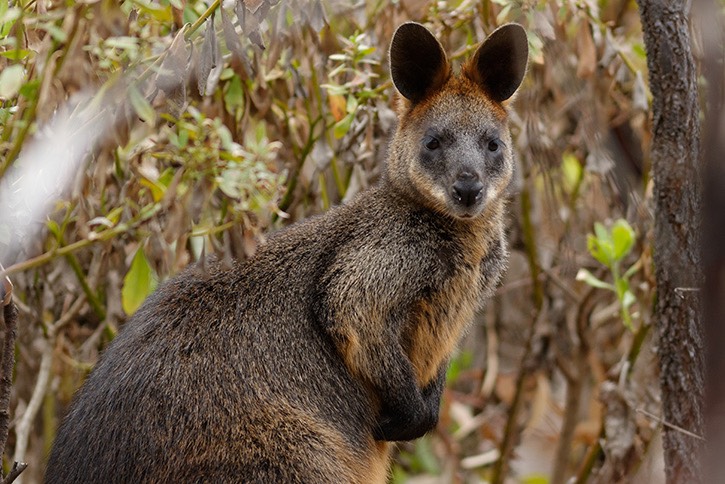
The wallaby rounded off the morning’s drive and we continued to a picnic site higher up a hill. Echidna Walkabout had laid on a fantastic lunch with delicious sandwiches and plenty of fresh vegetables and fruit. Paul then went on to demonstrate to us how to make billy tea, the speciality of the Australian swagmen. Swagmen were itinerant workers who travelled the countryside with all their belongings in a bag (swag) on their back, as featured in the famous Australian song “Waltzing Mathilda”. The song was duly played to us from Paul’s mobile phone and he explained to us that it was about a swagman who caught and ate a sheep and committed suicide when the police turned up to arrest him for its theft. We hadn’t realised that this apparently cheerful song was actually rather tragic!
Paul then proceeded to actually make an authentic billy tea with eucalyptus leaves. Before serving it he swung the billycan in full circles vertically overhead, like a human centrifuge to spin the tea leaves down to the bottom. The tea was delicious but quite strong!
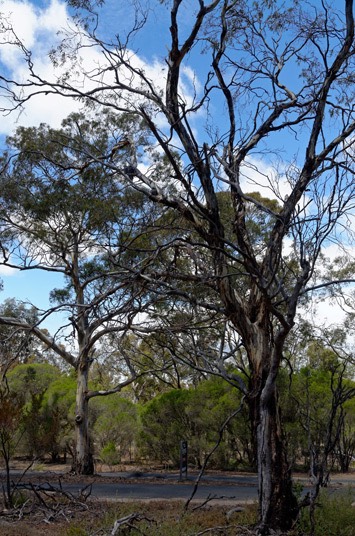
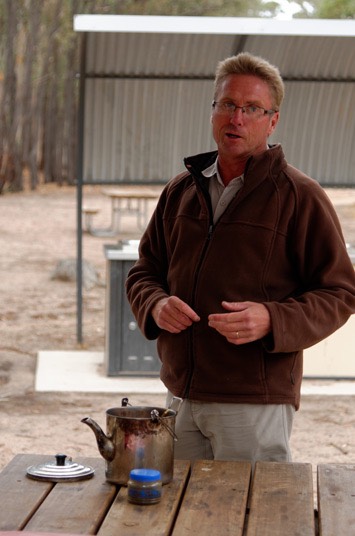
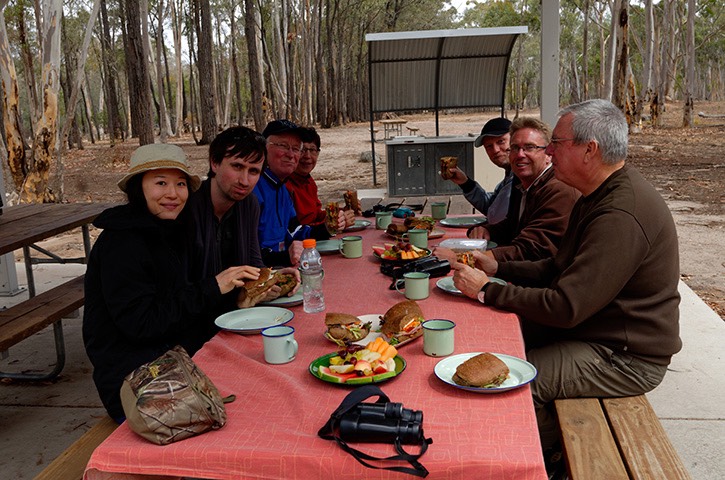
After this very enjoyable lunch Paul took us to a tree in which a family of tawny frogmouths (Podargus strigoides) had made their home. Frogmouths are related to nightjars and it was another case of “spot the animal”, as these birds were extremely well camouflaged against the grey branches of the eucalyptus tree. The parents sat closely together and the youngster a little way off by itself.
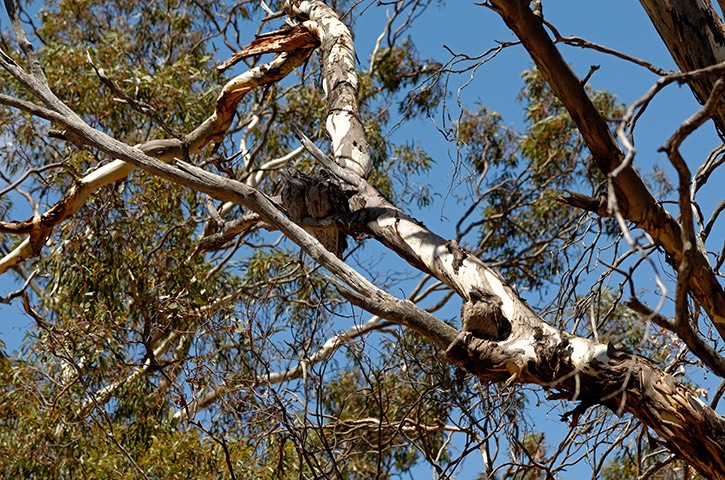
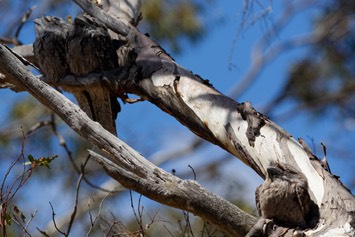
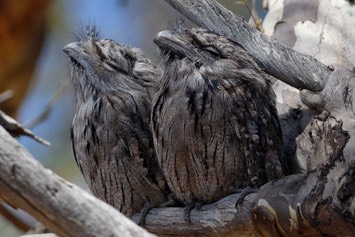
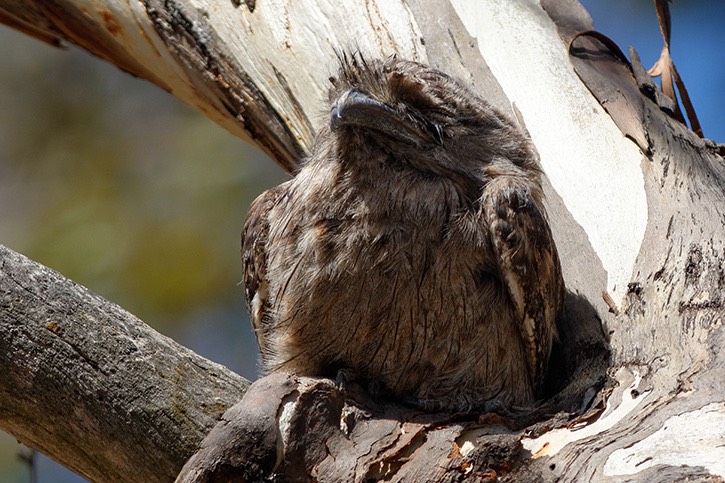
Frogmouths have a wonderfully cryptic patterned plumage, which matches their surroundings perfectly. During all the time we watched them, they barely moved, just one adult very slightly turning its head.
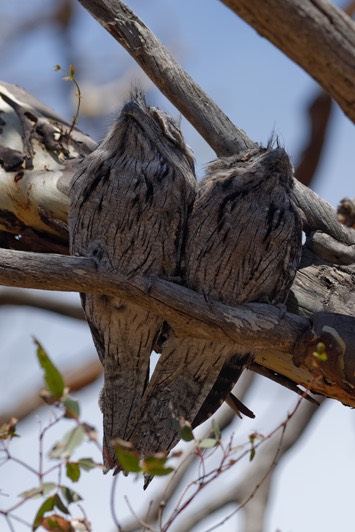
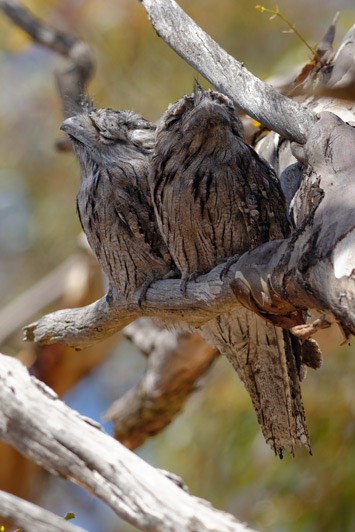
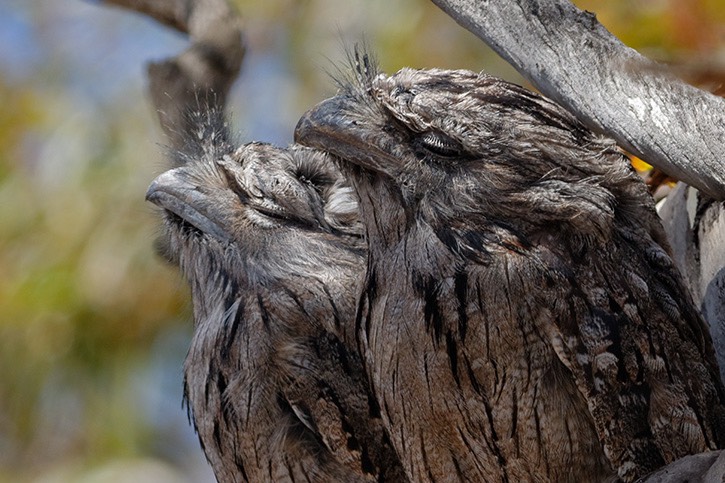
A lone sulphur-crested cockatoo (Cacatua galerita) in a nearby tree was more active, but unfortunately kept itself well hidden in the branches. We were still very pleased to have seen this charismatic bird, one of our favourite species in Australia!
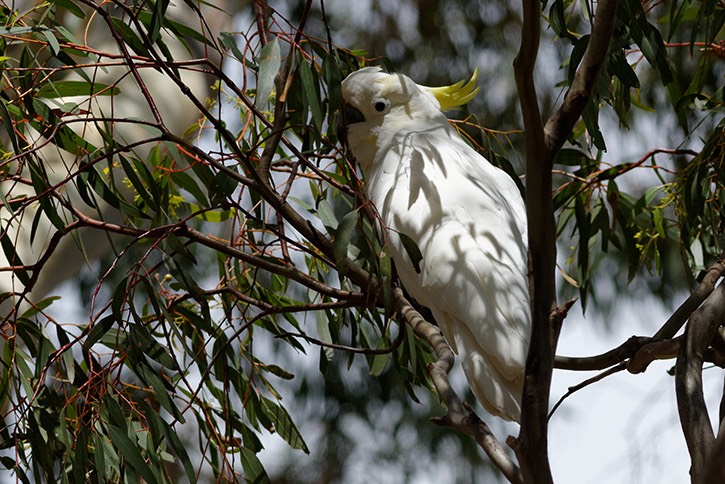
After exploring the You Yangs, we headed back to the Serendip Sanctuary. When we pulled up at the entrance, Yeaves, our first koala of the day, had moved into another tree but was already fast asleep again.

There is a lot of open grassland in the sanctuary, which is perfect habitat for kangaroos and emus (Dromaius novaehollandiae). Emus are rather extraordinary flightless birds with plumage that looks more like shaggy hair than feathers. Together with kangaroos, they appear on the Australian coat of arms; neither animal is said to be able to walk backwards and thus they symbolises Australia’s intention always to move forwards.
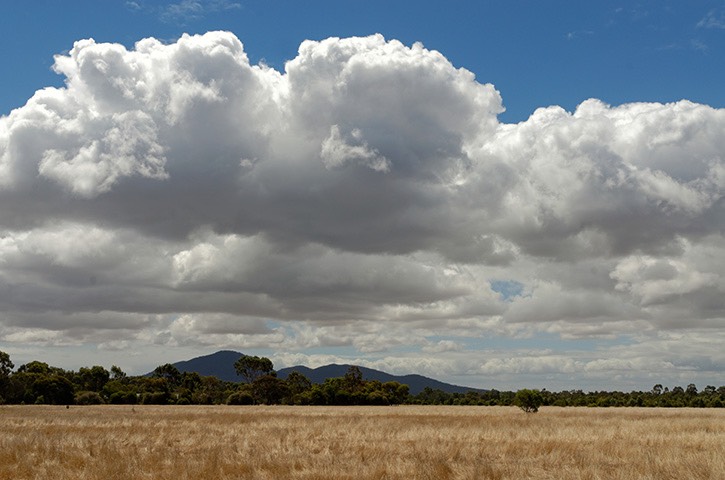
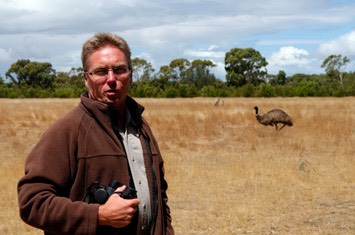
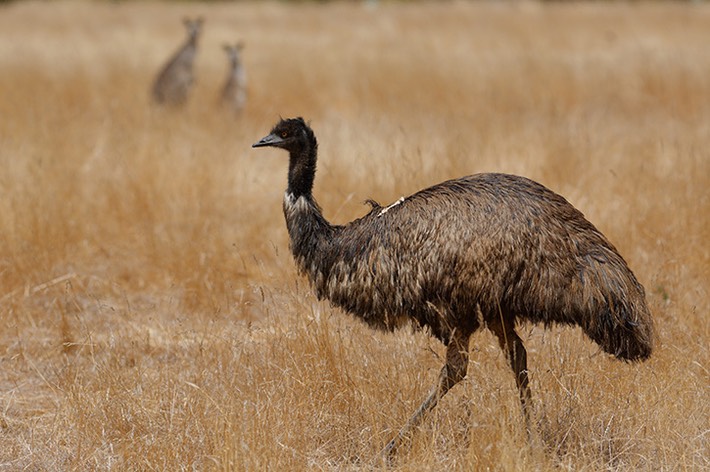
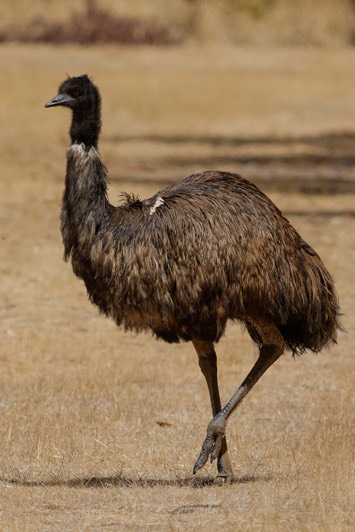
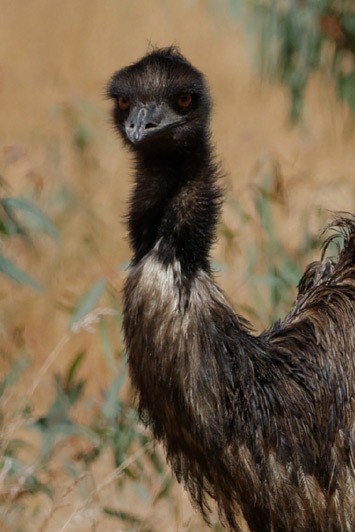
Earlier in the day we had already seen some kangaroos in the distance but now we walked across the open grassland, trying to sneak up on a mob of Eastern grey kangaroos (Macropus giganteus). A mother and large joey (which is what kangaroo youngsters are called) were out in the open, posing nicely for some photographs before finally bounding off in long, big strides to join the rest of the mob.
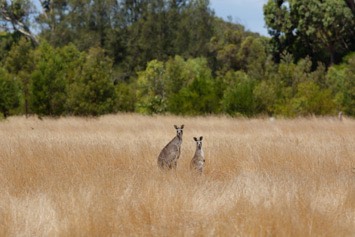
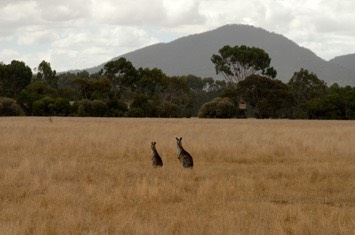
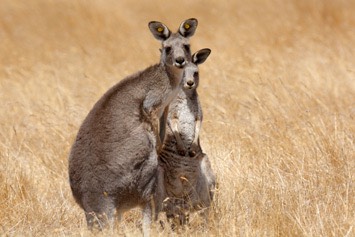
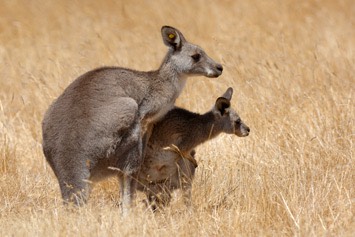
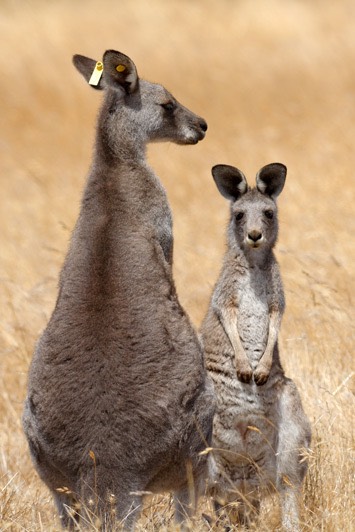
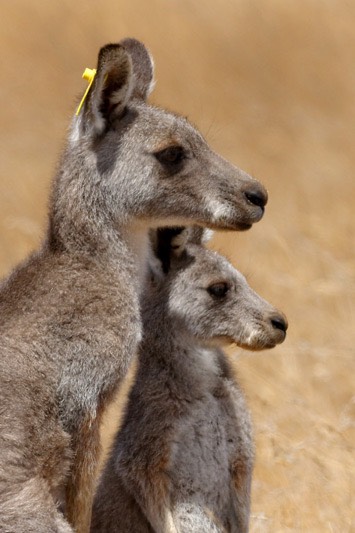
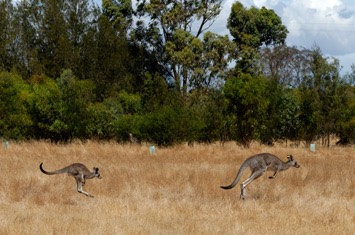
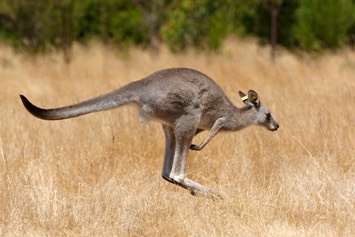
This group of kangaroos is actually part of a scientific research programme, where interactions between different individuals are studied. In order to make individual kangaroos identifiable, most of them carry two very colourful ear tags. This obviously doesn’t make for very natural looking photos but, apart from us, nobody seemed to be in the slightest bit bothered by that.
We actually got quite close to the kangaroos and could watch them go about their normal life: eating, sleeping, scratching and hopping about. We even saw a few kangaroos with the paws of their joeys sticking out of their pouches, but no joey appeared keen to take a closer look at us.
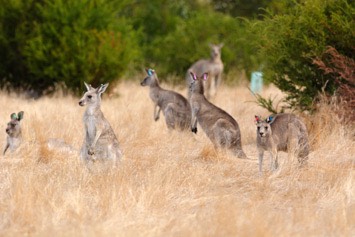
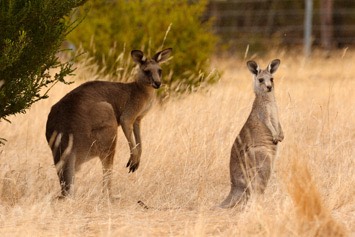
Despite the many ear tags, we managed to capture some photos of untagged animals in their natural environment before it was time to leave them in peace and head on.
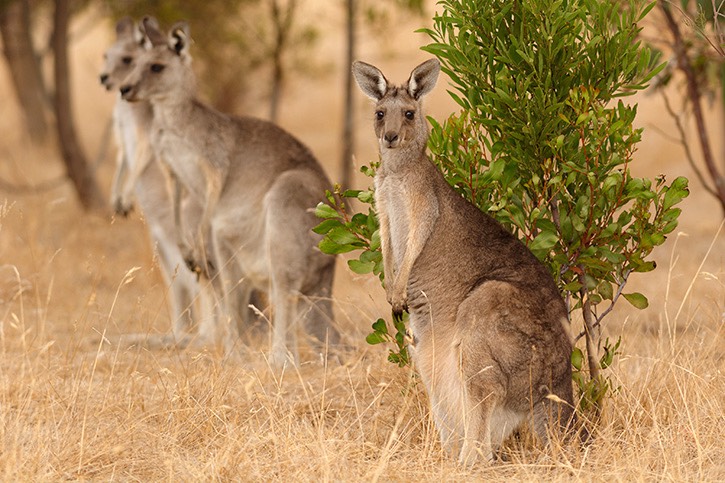
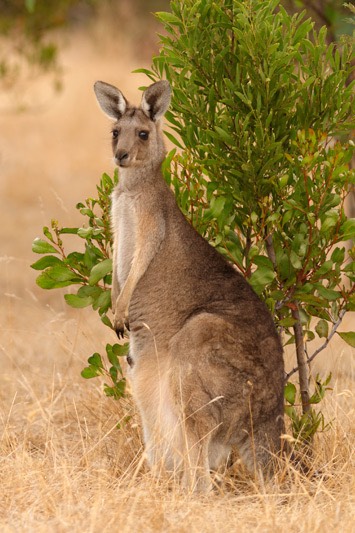
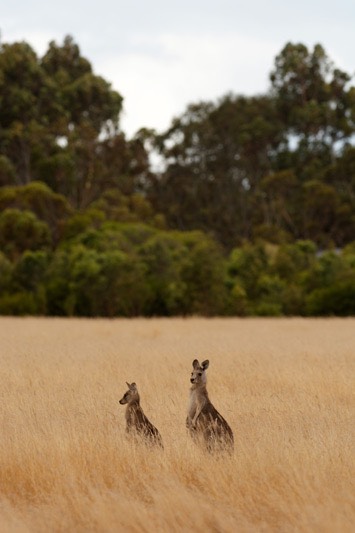
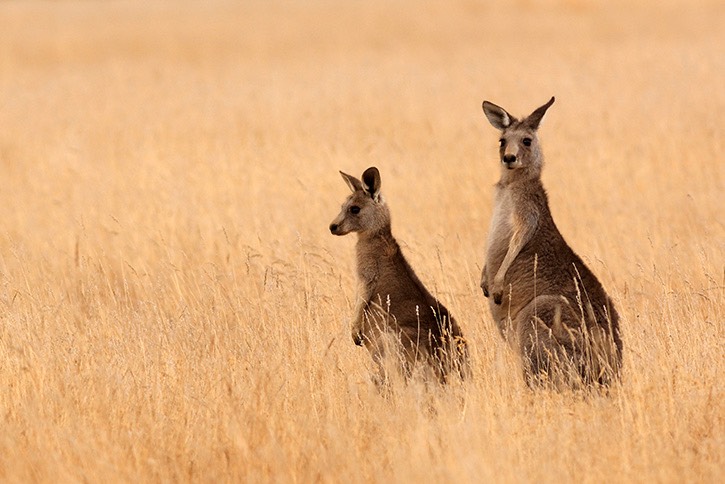
After the kangaroos it was time to do a bit more bird watching. A whistling kite (Milvus sphenurus) circled overhead, easily recognisable by the characteristic pattern of its wings.
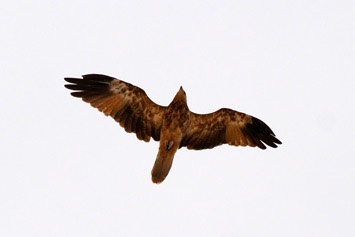
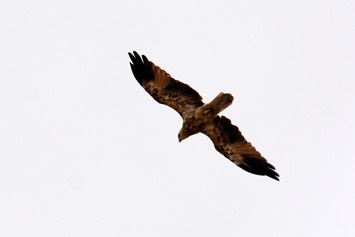
Next we went to a small lake, where a group of yellow-billed spoonbills (Platalea flavipes) was feeding. Easily spooked, they took off to give us fine views of their pink underwings.

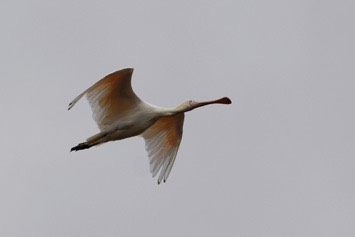
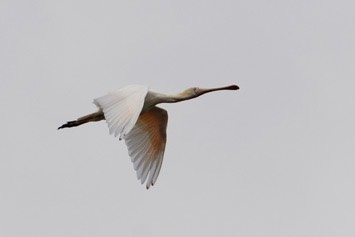
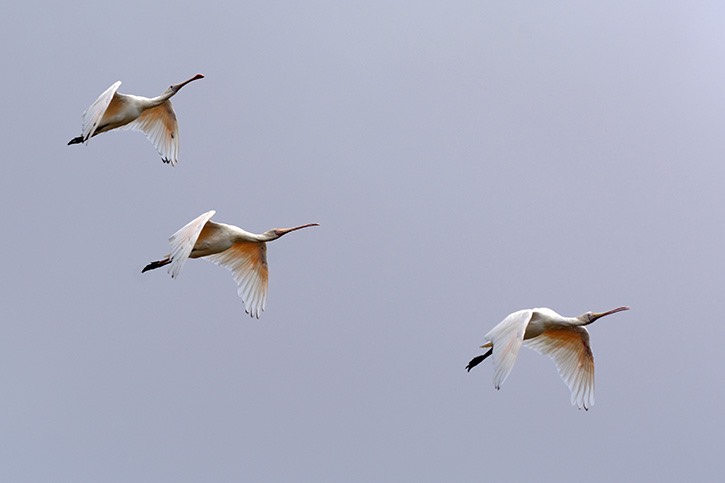
While watching the birds on the lake, a cheeky emu tried to sneak up behind us. It tried hard to stay hidden behind some bushes, but came so close that we got some satisfying portrait shots. Despite being somewhat ungainly, they are actually quite stunning birds with piercing eyes!
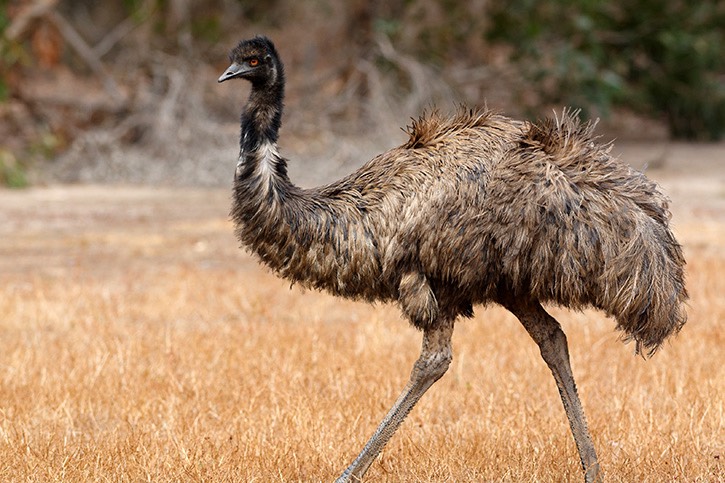
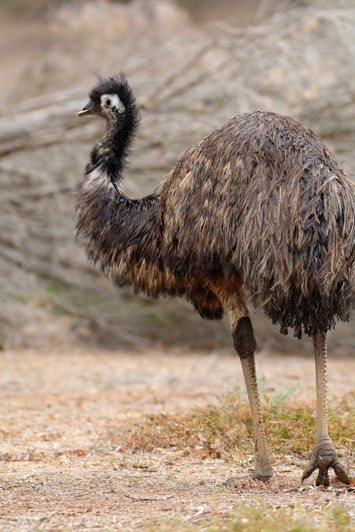
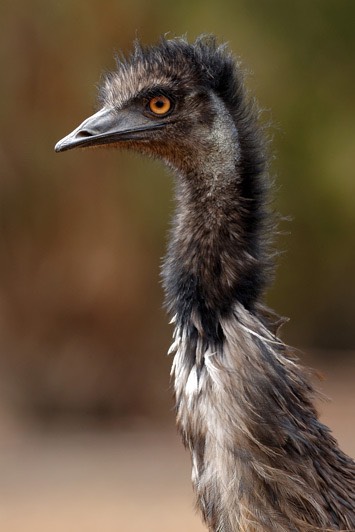
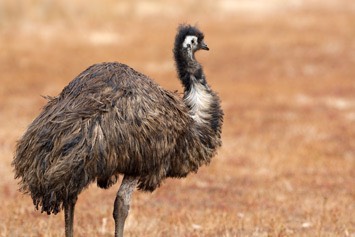
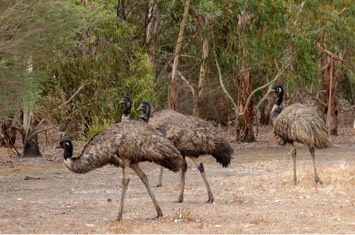
Heading back to the van, we came across some long yet very lightweight bones, which Paul identified as emu leg bones.
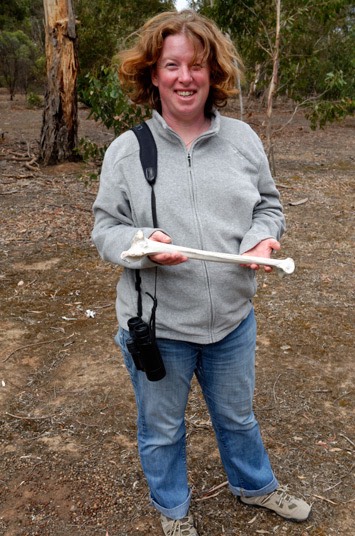
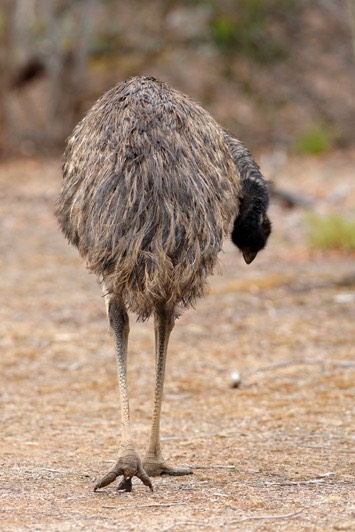
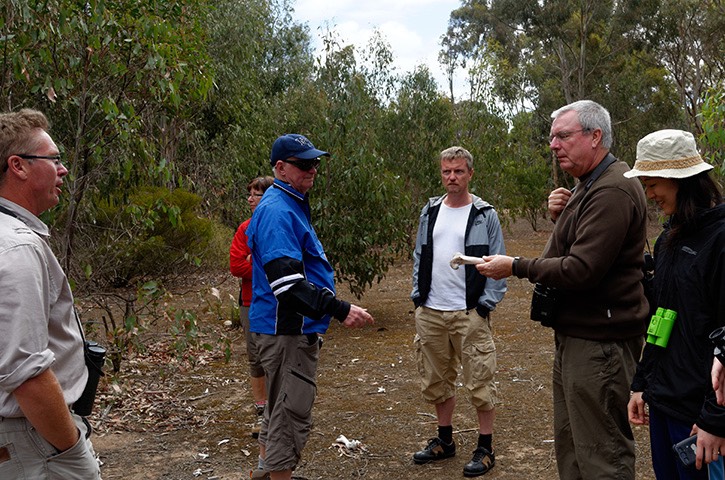
With the encounter with the emus, our trip came to an end. The Swedish couple were dropped off at their camper van and we returned with Paul to Melbourne, along with the Canadian couple and the British guy. Paul was a very knowledgeable guide, who answered our endless stream of questions patiently and was always happy to take photographs for those who only had a mobile phone and no camera. We had a great day and managed to see a good number of Australia’s charismatic species: cute as well as grumpy koalas, kangaroos and wallabies. On top of that we saw one of the world’s only two egg-laying species of mammals, the echidna and a host of amazing birds.
Not bad at all for a day trip to Australia!